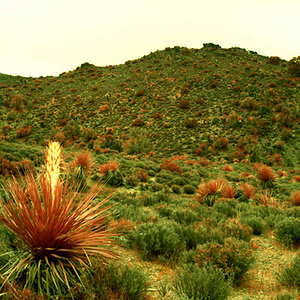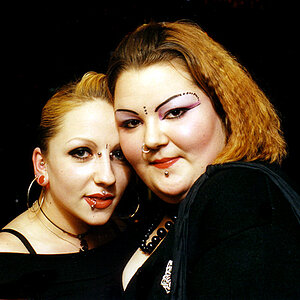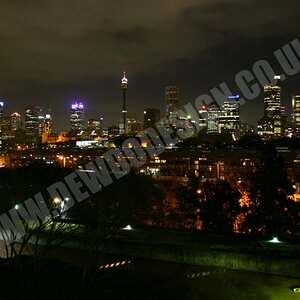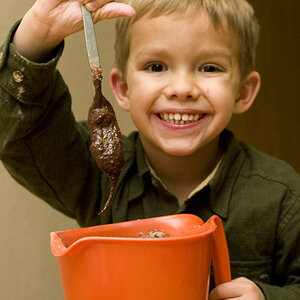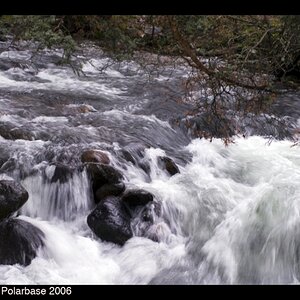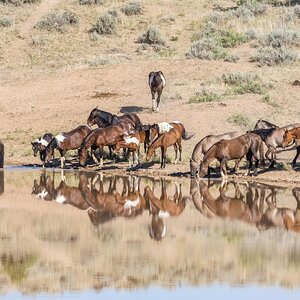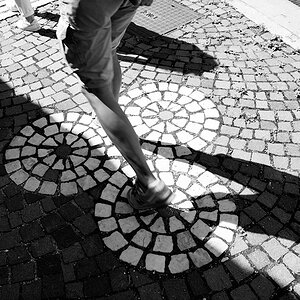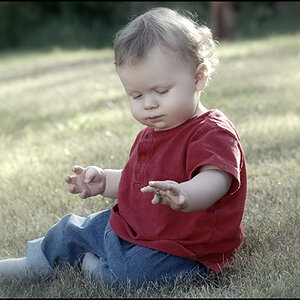photogoddess
TPF Noob!
- Joined
- Feb 29, 2004
- Messages
- 6,251
- Reaction score
- 34
- Location
- Lala Land
- Website
- www.trueblueintimates.com
- Can others edit my Photos
- Photos NOT OK to edit
I took about 3 pages of notes during the workshop that Malachite and I took with Joe Buissink. Some of the things he had to say were no surprise and some really made me think. Either way, the guy really knows his stuff. He shoots and does business very much 'outside of the box'. The workshop was $139 but would have been a bargain at twice the price. I learned so much and I think Malachite has a new photo hero.  For those of you that are interested, here is the first installment of my notes of Joe's tips.
For those of you that are interested, here is the first installment of my notes of Joe's tips.
Joe charges on a flat rate basis for his time = fee based. 7 hours of coverage for $10k. He ALWAYS retains his copyright on all of his shoots but offers up negatives and digital files to his clients as he feels that they are their images. He shoots primarily film - mostly black and white with digital and IR as well. He is now shooting weddings as a 2nd shooter. He's hired an assistant to shoot all of the standard stuff (1st shooter) and he feels that being 2nd shooter frees him up to play (aka be more creative).
He shoots roughly 2000 images per wedding with digital proofs are given on cd with film proofs presented as 3x5s in a 5x7 box purchased from DNL Frames. He isn't concerned with his clients scanning to make prints for 'Uncle Bob' as his main after wedding sale is albums. Most weddings take 2 to 3 volumes. He puts no more than 3 images to a page and each volume contain 80 - 100 images. His albums are printed by Leathercraftsman or Graphi Studio and he sets them up using a sketch pad that he has the client sign each page off on. 50% is due upon signing to hold the date with the balance due 2 weeks before the event. 50% is due upon approval with the balance on pick up. He uses A&I, Still Moving Pictures, Image Experts for his regular prints. He believes that his work is a 50/50 deal with half being his vision and half being his printer's work. Display prints are hand printed on double weight fiber based paper by Robert Cavali. He's expensive but he's definitely worth the money as his prints are works of art all on their own.
He never takes deposits, he takes retainers. A deposit is refundable but a retainer isn't in the event that a client cancels or doesn't pay the balance. He does offer refunds if he is able to rebook the date. He has 2 part timers that work on albums, prescreen clients and act as assistants at weddings. When he meets with prospective clients he shows them prints instead of albums. Lights dimmed, candle lit with soft music playing, he brings out one print at a time and tells the story about that moment. By the time they see the 3rd print they are usually in tears and are ready to sign. His standard mark up for prints is double his cost.
Tune in tomorrow for more business, tech and shooting tips from Joe Buissink. :mrgreen:
 For those of you that are interested, here is the first installment of my notes of Joe's tips.
For those of you that are interested, here is the first installment of my notes of Joe's tips.Joe charges on a flat rate basis for his time = fee based. 7 hours of coverage for $10k. He ALWAYS retains his copyright on all of his shoots but offers up negatives and digital files to his clients as he feels that they are their images. He shoots primarily film - mostly black and white with digital and IR as well. He is now shooting weddings as a 2nd shooter. He's hired an assistant to shoot all of the standard stuff (1st shooter) and he feels that being 2nd shooter frees him up to play (aka be more creative).
He shoots roughly 2000 images per wedding with digital proofs are given on cd with film proofs presented as 3x5s in a 5x7 box purchased from DNL Frames. He isn't concerned with his clients scanning to make prints for 'Uncle Bob' as his main after wedding sale is albums. Most weddings take 2 to 3 volumes. He puts no more than 3 images to a page and each volume contain 80 - 100 images. His albums are printed by Leathercraftsman or Graphi Studio and he sets them up using a sketch pad that he has the client sign each page off on. 50% is due upon signing to hold the date with the balance due 2 weeks before the event. 50% is due upon approval with the balance on pick up. He uses A&I, Still Moving Pictures, Image Experts for his regular prints. He believes that his work is a 50/50 deal with half being his vision and half being his printer's work. Display prints are hand printed on double weight fiber based paper by Robert Cavali. He's expensive but he's definitely worth the money as his prints are works of art all on their own.
He never takes deposits, he takes retainers. A deposit is refundable but a retainer isn't in the event that a client cancels or doesn't pay the balance. He does offer refunds if he is able to rebook the date. He has 2 part timers that work on albums, prescreen clients and act as assistants at weddings. When he meets with prospective clients he shows them prints instead of albums. Lights dimmed, candle lit with soft music playing, he brings out one print at a time and tells the story about that moment. By the time they see the 3rd print they are usually in tears and are ready to sign. His standard mark up for prints is double his cost.
Tune in tomorrow for more business, tech and shooting tips from Joe Buissink. :mrgreen:


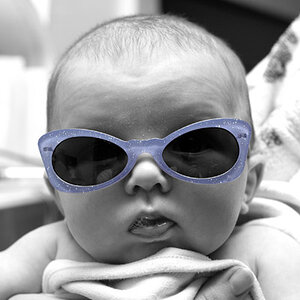
![[No title]](/data/xfmg/thumbnail/31/31011-439c1242fe08cf6b54f32bf06523a567.jpg?1619734567)
